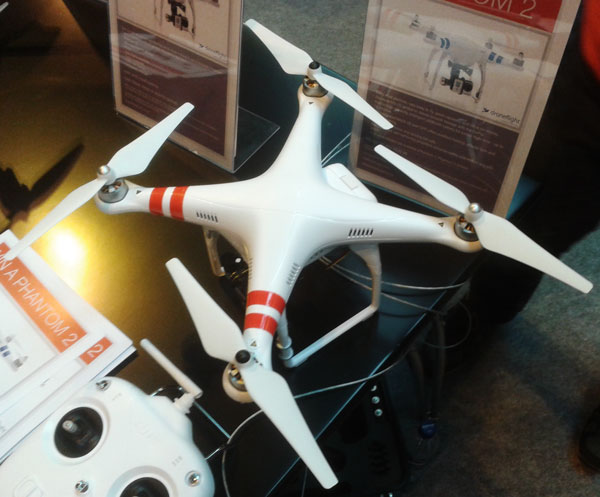The use of radio control helicopters for aerial photography photography has a number of advantages and disadvantages when compared to the use of full-sized helicopter or fixed-wing aircraft. Four-rotor designs, such as the small model shown below, have proved to be stable and hence popular.
 Technology has moved on very rapidly, and off-the-shelf helicopters are now available with cameras mounted in three-axis gimbals. Movement of the camera is controlled by a servo linked to the helicopter's radio receiver. This gives a remote operator the ability to tilt the camera up or down, and even rotate it on it’s axis by 360 degrees. A digital camera's shutter can also be operated remotely, and a video downlink can be provided so that the operator can see the shot live as the helicopter is positioned.
Technology has moved on very rapidly, and off-the-shelf helicopters are now available with cameras mounted in three-axis gimbals. Movement of the camera is controlled by a servo linked to the helicopter's radio receiver. This gives a remote operator the ability to tilt the camera up or down, and even rotate it on it’s axis by 360 degrees. A digital camera's shutter can also be operated remotely, and a video downlink can be provided so that the operator can see the shot live as the helicopter is positioned.
Principal advantages are:
- Cost - R/C helicopter operations are significantly cheaper than those using full-sized aircraft;
- No airfield is required;
- R/C helicopters can fly at any altitude up to about 500ft but full-size commercial aircraft may limited to operations above 500 - 1,000 feet.. Flying closer to a subject reduces problems with haze.
- R/C helicopter operations are less time consuming, quieter and generally more environmentally friendly than those involving full-size aircraft;
- The quality of images or video produced using modern equipment, such as sophisticated gimbals ans image stabilization, is the same as that obtained from full-size aircraft.
- Disadvantages include:
- Operational limits imposed by wind and poor weather;
- A maximum operational altitude of a few hundred feet;
- The need to operate in the presence of ground-based hazards, such as trees and aerial.






